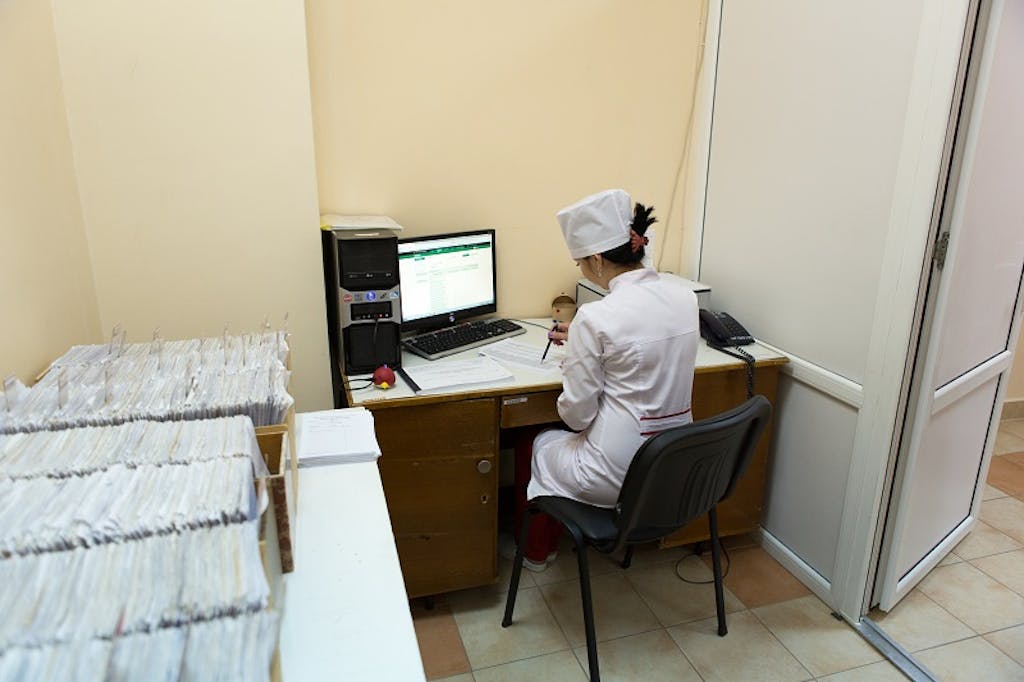Tuberculosis is poised for a deadly global surge, as progress slips due to pandemic-induced disruptions. Urgent action and investment are needed to protect progress made and to meet the 2022 TB targets agreed to by UN Members States.
For the first time in over a decade, deaths from tuberculosis have increased, making TB the world’s second deadliest infectious killer after COVID-19.
The 2021 Global Tuberculosis Report, recently released by the World Health Organization (WHO), cites two underlying causes for the increase of TB deaths in 2020.
First, pandemic lockdown made it difficult for people to seek care, such as TB diagnosis and treatment. In total, fewer people were diagnosed and treated or provided with TB preventive treatment in 2020 than in 2019.
Second, severe disruptions to TB services and supply chains, coupled with a reduction in human, financial, and other resources that have been reallocated from tackling TB to combating the COVID-19 response, have limited the availability of essential services. Spending on TB diagnostics, treatments, and prevention decreased globally 8.6%, to $5.3 billion in 2020 from $5.8 billion in 2019.
WHO estimates that up to 4.1 million people who have newly fallen ill with the disease have not been diagnosed with it or officially reported to national authorities, an increase from 2.9 million in 2019. As rates of delayed TB diagnosis and interruptions to TB treatment continue to reach all-time highs, this shadow pandemic is poised for a deadly global surge in the next two years.
Before COVID-19 struck, TB was the leading cause of death from infectious diseases globally. In 2019, approximately 25% of the world’s population had TB, and it claimed the lives of nearly 4,000 people every day.
But progress was being made.
The number of people being treated for TB was on the rise — over 14 million people received care in 2018 and 2019 combined. And the number of people provided with preventive treatment for TB quadrupled, from 1 million in 2015 to over 4 million in 2019. In comparison, the WHO reported a 21% reduction in TB treatment in 2020, when COVID-19 was rampant, with only 2.8 million people accessing the treatment they needed.

The clock is ticking for governments to hold each other accountable and accelerate their collective actions to mitigate the impacts of the COVID-19 pandemic on rising TB incidence and mortality.
By 2050, multidrug-resistant TB — a form of TB that does not respond to known antibiotic treatments — alone is predicted to cause 2.5 million deaths, costing approximately $17 trillion if it is not adequately addressed and controlled in the next few years. This is a human and economic cost the world cannot withstand.
In 2018 world leaders came together at the High-Level Meeting (HLM) at the UN General Assembly to spur global commitments and actions to reduce the burden of TB on communities around the world. The resulting 2022 Global Targets for Tuberculosis represented the first time that UN Member States set and agreed upon specific global targets for funding TB prevention, treatment and care, and research.
But now, with the 2022 deadline fast approaching, the world is falling further off track. COVID-19 has placed enormous pressure on health systems around the world — from supply chain delays to overburdened health workers to limited access to diagnostic tools and treatments — which has underscored the need for increased investment.
By investing in health system infrastructure, rebuilding the health care workforce, and ensuring health care providers have the resources they need to prevent and respond to the multiple global health threats of today, we can not only spur progress toward the 2022 TB targets but we also can actively prevent and limit the impact of future epidemics.
We have seen what the cost of inaction and underinvestment can yield: a global pandemic that can upend economies and take millions of lives around the world. Health threats like TB cannot continue to be ignored.
New tools for TB prevention, treatment, and care are urgently needed if the world hopes to get back on track to meet TB targets. At the HLM on TB in 2018, leaders promised to spend $15 billion every year on TB prevention, diagnosis, treatment, and research. Less than half of that target has been met.
After the COVID-19 pandemic has been subsided, political leaders can demonstrate their commitment to improving global health security and ensuring global economic stability by rededicating themselves to stopping the spread of TB through:
- Expanding patient-centered care, active case detection, increased availability of rapid sensitivity tests and other diagnostic tools.
- Increasing bilateral and multilateral investments in the development of new TB diagnostics, treatments, and vaccines.
- Implementing national policies that preserve the rights of communities with heightened vulnerability to TB.
The past year has been an alarming wake-up call for political leaders and policymakers around the world to reprioritize and strengthen global actions to combat and prevent airborne respiratory diseases such as TB, SARS, and now COVID-19 — which can escalate from epidemics to global pandemics in a matter of weeks.
As countries become increasingly hyperfocused on accelerating the distribution of COVID-19 vaccines, we cannot afford to lose sight of the 2022 TB targets and to let the progress made against this deadly respiratory disease slip away. The health and well-being of millions of people around the world are on the line.
Photo: Christine McNab/ Stop TB Partnership



 View All Blog Posts
View All Blog Posts
